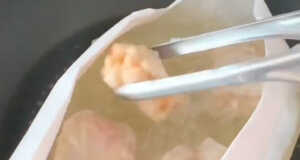Buttery, tender, and with a slight snap, nothing comes close to the buttery salty goodness of a Ritz cracker. Since its inception in the mid-1930s, the cracker was meant to be a rival to Sunshine Biscuit Company’s Hi Ho crackers and ended up out-selling them with a luxury marketing strategy capitalizing on the name association with the famous hotels of Cesar Ritz. Yet the crackers of yesteryear and nowadays are quite, quite different.

It started with a comment online, and then it became one big deep dive. Comments across the internet stated that the Ritz cracker literally didn’t stand a chance. When put to the dipping or spreading test, the cracker caved under actual pressure. Some even said that a decent portion of boxes were full of crushed, broken crackers.

So it turns out that there might be a culprit to the change in texture and structure. Has the change been recent or a gradual process, it’s hard to tell, but back in 2015, the FDA declared that trans fats could not be categorized as GRAS (generally recognized as safe). Leading up to 2015, the FDA had looked into the effects and medical impact of partially hydrogenated oils (PHOs) and concluded that the benefits of PHOs were negligible and could not compare to naturally sourced types of fats.

Trans fats help vegetable oils stay hard at room temperature, meaning the Ritz crackers had a stronger structure and a crispier bite. With that stabilization removed, the crackers are now significantly weaker.
While the crackers’ flavors aren’t impacted, the texture means you may have to have some assistance with a spoon to apply dips and have to be careful adding any sort of spread.












